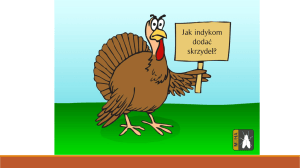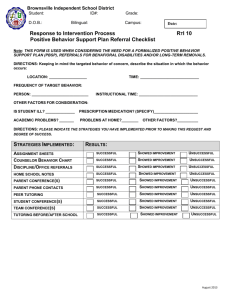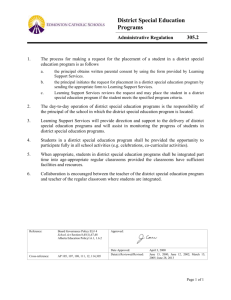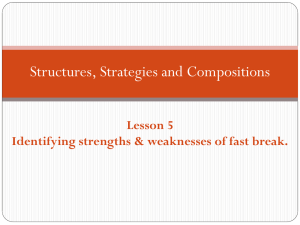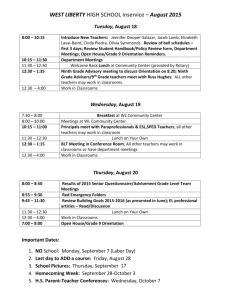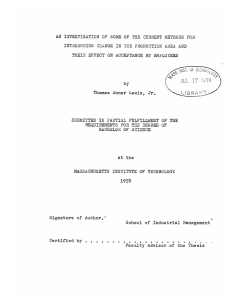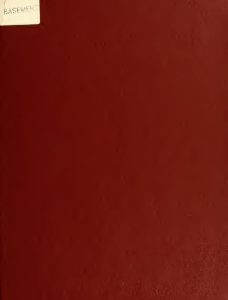Developing an Understanding of Group Work
advertisement
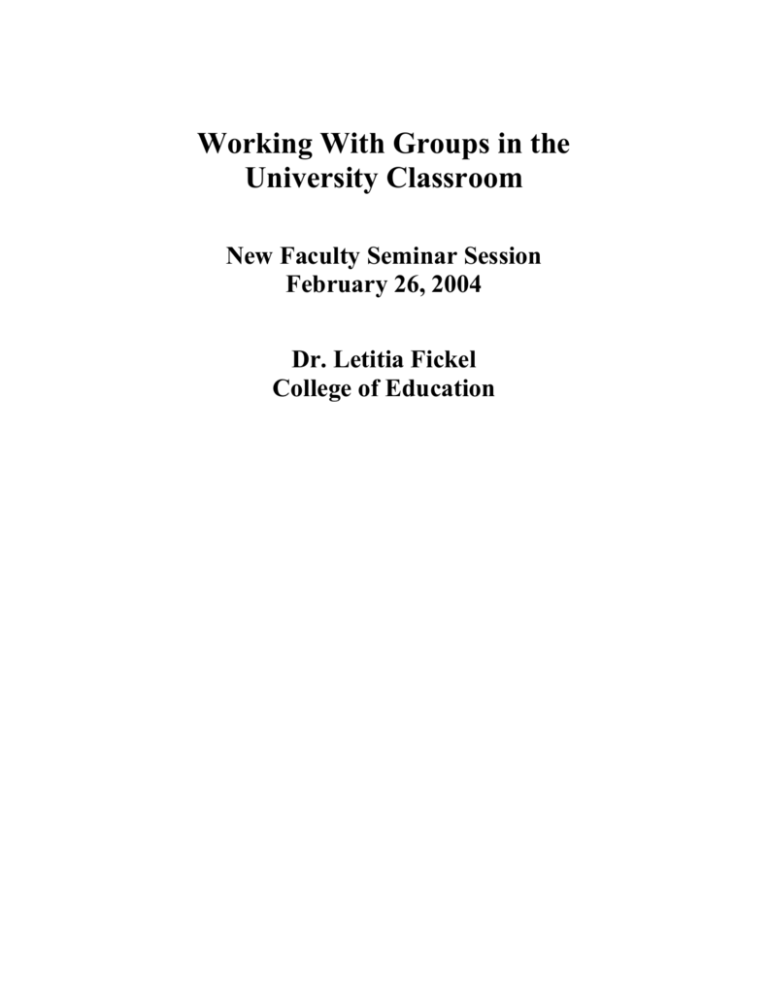
Working With Groups in the University Classroom New Faculty Seminar Session February 26, 2004 Dr. Letitia Fickel College of Education Why Use Group Activities? Research indicates that, regardless of subject-matter, students working in small groups tend to learn more and retain it longer. Students who work in groups report being more satisfied with their courses and having more motivation to learn and persevere in courses. Learning groups provide a context in which students can: Construct and extend conceptual understanding of what is being learned through the group discussion and explanation Develop and increase their meta-cognitive awareness Use the shared “mental models” learned from others in order to develop flexible ways to solve problems jointly and individually Acknowledge and utilize individual students’ strengths and expertise Receive informal and interpersonal feedback on how well they are developing and performing Receive social support and encouragement to take risks in ways that increase competencies Be held accountable by peers to practice and learn procedures and skills Acquire new attitudes, habits of mind, and skills (e.g. organization, negotiation, delegation, leadership, and following others’ leadership) Developing an Understanding of Group Work In your group you will be engaging in a number of activities designed to introduce you to some key concepts and information about group work in classrooms. The purpose of this group activity is twofold: 1) to support your development of a framework for group learning and teaching, and 2) to provide an experience that models what group learning and teaching can feel and look like. In your groups decide on who will fulfill each of the following roles: Gatekeeper: Keeps an objective eye on group progress. Balances member participation. Keeps an eye on the clock. Keeps group focused. Recorder: Creates the written record of the important ideas, questions, problems, and suggestions developed by the group. Reporter: Reads instructions or materials to group when requested by group or teacher. Shares group ideas with class. (May also take on role of Researcher if there is no one to fill this role.) Researcher: Gathers and shares information from other groups and/or teacher when needed. ________________________________________________________________ Types of Group Work Brainstorm With your colleagues brainstorm a list of group activities and kinds of group work you have used, experienced, or know about. Write your list on the top half of the paper provided. Categorize Using the descriptions of the “types of group work” handout categorize your brainstormed examples. Use the bottom half of the paper provided. Synthesize Gather information from other group(s) about their examples. Look for new ideas to add to your group list, as well as look for common examples. __________________________________________________________________ Informal learning groups are ad hoc temporary clusterings of students within a single class session. Informal learning groups can be initiated, for example, by asking students to turn to a neighbor and spend two minutes discussing a question you have posed. You can also form groups of three to five to solve a problem or pose a question. You can organize informal groups at any time in a class of any size to check on students' understanding of the material, to give students an opportunity to apply what they are learning, or to provide a change of pace. Formal learning groups are teams established to complete a specific task, such as perform a lab experiment, write a report, carry out a project, or prepare a position paper. These groups may complete their work in a single class session or over several weeks. Typically, students work together until the task is finished, and their project is graded. Study teams are long-term groups (usually existing over the course of a semester) with stable membership whose primary responsibility is to provide members with support, encouragement, and assistance in completing course requirements and assignments. Study teams also inform their members about lectures and assignments when someone has missed a session. The larger the class and the more complex the subject matter, the more valuable study teams can be. Possible Structures for Group Work Brainstorming – generating ideas Snowballing/pyramid—people start working individually, then in pairs, then in quartets Rounds—people sit in a circle, each makes a brief statement or comment on an issue or problem or has the right to pass Fishbowl—half the group (or some subset of the class) sits in a circle to engage in a discussion or activity and the rest sit behind and listen and then change places after 7-8 minutes. Variations can include leaving 1-2 seats open in the circle so people can join as they feel compelled, or allowing a “listener” to tap a circle member out and take their place. The “listeners” need to be prompted on what to listen for and be accountable for some action at the end of the fishbowl. Case studies—students work together to analyze and respond to a scenario developed by the teacher or each other. Simulation—a scenario or activity that asks the students to role-play in some manner. Lab experiments are a form of simulation when the procedures and purpose are predetermined. Syndicates—topic is split into sections and each group or team works on a section of the topic and presents its views. Can be coupled with role-playing by taking on diverse perspectives within a field or around an issue/topic. Could also be structured as a debate. Can result in only oral or both oral and written formats. Plenary session—group process to draw conclusions, synthesize information, or discuss processes. Project—any complex task that requires multiple steps and extended time to complete. Study teams—long-term group with stable membership designed to provide support Designing Group Work Reflecting on our Experiences Each person in the group is to write a brief description of either an “unsuccessful” or a “successful” example of group work you have experienced as a teacher or student. Two people must write about “unsuccessful” and two about “successful.” Use the questions below to develop your “story.” What was the task? What was the purpose? How was the length of the task? How were groups selected? What was the size of the group? How was the task/activity/project structured? Who did what? How was this decided? What was the role of the teacher? How was the group work assessed? What was assessed? Are there other features you think made it “successful” or “unsuccessful?” Sharing our “stories” You will share your stories one at a time. Each person has 3 minutes to tell his or her story. Stay focused on the key issues raised by the questions. The purpose of sharing our stories is to identify common elements of group work that can lead to success or failure. So, so you listen to each other engage in active listening to identify key features and common points. After both the “unsuccessful” stories have been shared proceed to the next step: Analyzing As a group identify the key elements that you think contributed to the “unsuccessful” experience. Then listen to the “success” stories and identify key elements that contributed to “successful” experiences. Synthesizing Gather information from other group(s) about their key elements for both “successful” and “unsuccessful” activities. Verifying (“Expert” Check) Check your self-generated list of elements for designing “successful” group work with the tip sheet provided by Letitia. Problem-Solving For one of the “unsuccessful” examples try to “redesign” the activity in ways that might help it be more successful. Identify specific aspects of the activity and apply ideas generated from your synthesis of “successful” elements. _____________________________________________________________________ Tip Sheet for Maximizing the Success of Group Work Creating the Climate Don’t assume that students know how to work in groups. Explain at beginning of course that group work will be a part of class. Explain why group work is important to their learning. Set ground rules for cooperative, “safe” environment. Model and teach communication structures that support deliberative dialogue and constructive ways to engage with diverse perspectives and differences of opinion. Explain group dynamics and advise them of the potential for conflict, but assure them that they can successfully negotiate it, and show them how. Organize appropriate seating arrangements within the classroom that reflect the needs of the group work you have designed. Take time to reflect on, discuss, and debrief the group process. Provide feedback to the class as a whole and to groups about their process and progress with tasks. Design Elements for Tasks Task must have a clear purpose and outcome that cannot readily be accomplished alone; it must require a sense of interdependence among the members. Task must be integral to the course objectives; no “busywork.” Task needs to fit the students’ current level of skills and abilities. Early in the term tasks should be less complex and involve few group members. Roles and division of labor are built into the structure and design of the task (early in the term), or task must be structured for students to easily delineate roles and assign work to each member (later in the term). Task compels students to reach consensus or make a decision, work with complex data or information, or derive a common “product.” Task encourages disagreement or multiple perspectives within the group as a tool to foster critical thinking, creativity, and ability to deal with ambiguity. Organizing Groups How groups will be formed should be based on the task and its purpose. o Groups can self-select, you can assign, or you can mix this by having students identify three people they might want to work with. o Self-select works well for quick in-class tasks, in small classes, and when students are majors and know each other. But, self-selection tends to form the “weakest” group, as people tend to select “people like themselves.” o Instructor formed groups are best when you want the groups to reflect certain aspects of diversity and/or mirror “real world” application. o Don’t put the “strongest” students with the “weakest.” Rather, create groups or pairs that are closer in skill sets, but will serve to “pull and push each other” to the next level of performance. Groups should be small 2-5 depending on task, the time given for the task and timing in course. Help groups plan how to proceed and succeed. For in-class activities or at the start of a term provide more structure to the process. With larger tasks or later in the term have them devise their own plan of action. Regularly check in with groups. With in-class activities observe and monitor groups. For larger tasks that span several weeks, establish checkpoints and have groups turn in outlines or drafts. Make groups the first-line of resolving group problems. Provide groups with mechanisms for dealing with disagreements, conflict or uncooperative members. For long-term projects keep groups together. Avoid breaking up groups, instead support them in finding ways to handle the problems. Assessment and Evaluation Make group feedback public within the group. Assess both the process and the product of group work. Assess both individual performance and group performance. Include self-assessment of the quality of the product and group process by each individual, both on-going (formative) and at the end (summative). Be explicit and upfront with students on exactly how they will be assessed as individuals and as groups. o Grading students only on individual work can lead to competition and subvert the group process. o Grading only the group process or product does not allow you to identify and provide feedback on individual student learning and intellectual growth. o It is best to balance an individual assessment with a group assessment. Group Dynamics Most groups go through four phases: Forming, Storming, Norming, and Performing (Tuchman, 1965). These phases occur in a group regardless of the duration of the task or the length of time. Expect it, plan for it, and explain it to students. Forming: During the initial stage of the group, structure is developed, roles are assigned or claimed (both implicitly and explicitly), status relations between members of the group are established, norms begin to emerge, shared values are discovered, and general procedures for decision-making and problem-solving are agreed upon. Storming: Conflicts in values, perspectives, goals, power, and information are discovered and foregrounded, and progress toward resolution is begun. This is often a creative stage and shouldn't be avoided. Norming: As conflicts are discovered and resolved, the group's approach to communication and problem-solving, for better or worse, is more firmly established. Performing: Having established roles, personalities, and norms, the group's time, attention, and energy is increasingly directed at the group task and decreasingly concerned with group maintenance, procedural questions, or personalities. Tuchman, Bruce W. "Developmental Sequences in SmallGroups."Psychological Bulletin 63 (1965): 384-89. References Websites www.psu.edu/celt/PST/KMPcollaborative.html teaching.berkeley,edu/bgd/collaborative.html www.flinders.edu.ua/teach/groupwrk.htm www-honors.ucdavis.edu/vohs/sec02.html Books & Articles Chickering, A. W, and Gamson, Z. F (eds.), Applying the Seven Principles for Good Practice in Undergraduate Education. New Directions for Teaching and Learning, no.47. San Francisco: JosseyBass, 1991. Connery, B. A. "Group Work and Collaborative Writing." Teaching at Davis, 1988, 14(1), 2-4. (Publication of the Teaching Resources Center, University of California at Davis) Cooper, J. "Cooperative Learning and College Teaching: Tips from the Trenches." Teaching Professor, 1990, 4(5), 1-2. Goodsell, A., Maher, M., Tinto, V, and Associates (eds.). Collaborative Learning: A Sourcebook for Higher Education. University Park: National Center on Postsecondary Teaching, Learning, and Assessment, Pennsylvania State University, 1992. Guskey, T R. Improving Student Learning in College Classrooms. Springfield, Ill: Thomas, 1988. Johnson, D. W., Johnson, R. T., and Smith, K. A. Cooperative Learning:Increasing College Faculty Instructional Productivity. ASHE-FRIC Higher Education Report No.4. Washington, D.C.: School of Education and Human Development, George Washington University, 1991. Rau, W., and Heyl, B. S. "Humanizing the College Classrooms: Collaborative Learning and Social Organization Among Students." Teaching Sociology, 1990, 18(2), 141-155. Sansalone, M. "Teaching Structural Engineering Through Case Studies and Competitions." CUE, 1989, 2(2), 7. (Newsletter available from Cornell University, Ithaca, N.Y) Smith, K. A. "Cooperative Learning Groups." In S. F. Schmoberg (ed.), Strategies for Active Teaching and Learning in University Classrooms. Minneapolis: Office of Educational Development Programs, University of Minnesota, 1986. "Study Groups Pay Off." Teaching Professor, 1991, 5(7), 7. Tiberius, R. G. Small Group Teaching: A Trouble-Shooting Guide. Toronto: Ontario Institute for Studies in Education Press, 1990.
